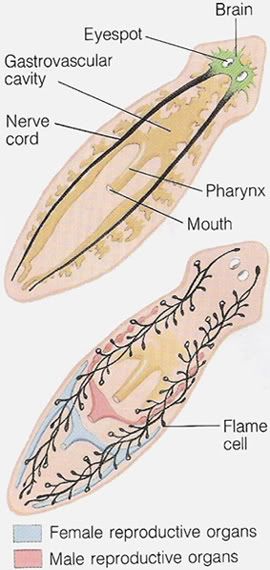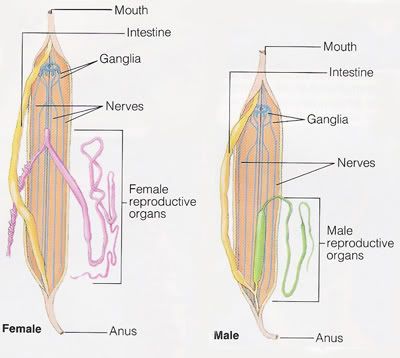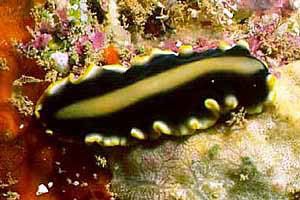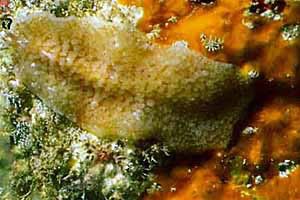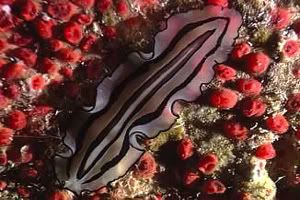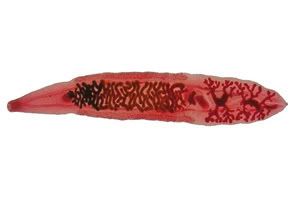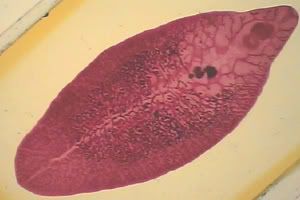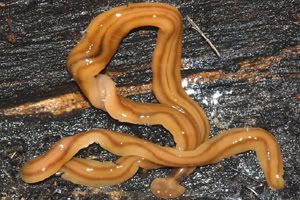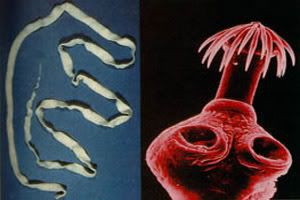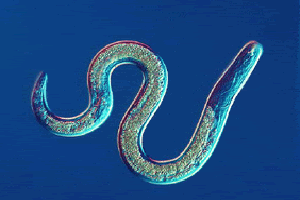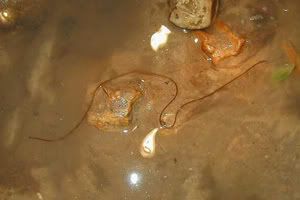Thursday, February 22, 2007
Defining Characteristics
Tuesday, February 20, 2007
Introduction

They are consisted of two phyla of wormlike animals: phylum Platyhelminthes (flatworms) and phylum Nematoda (roundworms).
The members of the phylum Platyhelminthes (platy means flat and helminth means worm) are the simplest animals with bilateral symmetry. Most of them exhibit enough cephalization, or development of the anterior end, to have a head. Flatworms also have more developed organ systems than either sponges or cnidarians.
Members of the phylum Nematoda, are among the simplest animals to have a digestive system with two openings - a mouth and anus. Roundworms range in size from microscopic to a meter in length, and may be the most numerous of all multicelluar animals.
Due to their feeding methods, flatworms are put into three major classes:
Class Turbellaria: free-living flatworms. Most familiar members of this class are planarians, or the “cross-eyed” freshwater worms, they are found in moist tropical areas.
Class Trematoda: parasitic flatworms known as flukes. They can be external or internal parasites and life cycles always involve with at least two different hosts. Pattern of multiple hosts is typical for most parasites.
Class Cestoda: long, flat parasitic worms usually attach themselves to the intestinal walls of the hosts. They have a head called a scolex on which there are several suckers and a ring of hooks.
Lab Photos
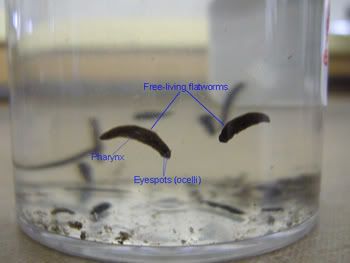
^ Planarians inside a jug of pond water.
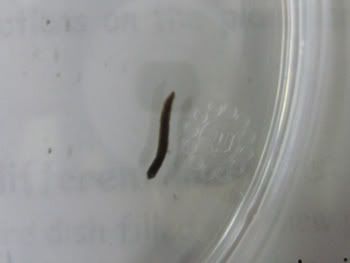
^ Planaria on a Petri Dish.
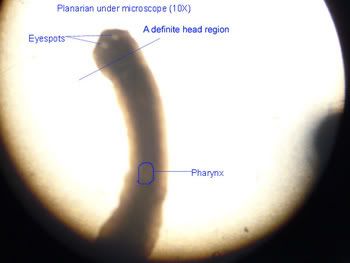
^ Labeled planarian under microscope.
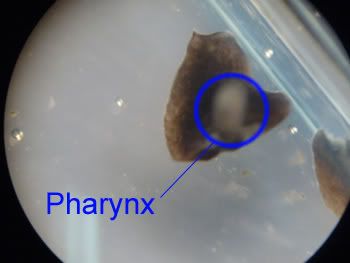
^ An enlarged pharynx of a cut planarian.
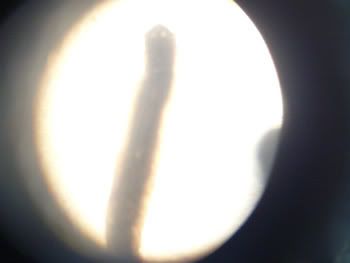
^ Planarian in a "thinner" manner (movement). Can you idnetify its body parts?
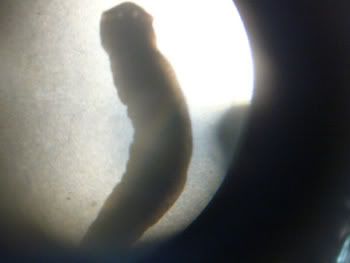
^ Planarian in a "fatter" manner.
Where Do They Live (Habitats)
Most roundworms are free-living, and are found in virtually all parts of the Earth - in soil, salt flats, aquatic sediments, polar or tropical regions, and even hot springs. However, some species are parasitic roundworms that live within a particular host.
Adaptations to Their Environment
Roundworms can complete respiration, excretion, and internal transport by diffusion as well. Parasitic roundworms produce eggs or zygotes that are immune to harsh environment to fit their complicated lifecycles.
Vocabulary
Flatworm- simple animal with bilateral symmetry belonging to the phylum Platyhelminthes
Nematoda- phylum consisting roundworms
Roundworm- pseudocoelomate animal with a digestive system with two openings that belongs to the phylum Nematoda
Pharynx- muscular tubelike structure located at the back of the mouth that connects the mouth with the rest of the digestive tract
Flame Cells- structures that freshwater flatworms use to get rid of extra water
Ocelli- eyespots, or light sensitive organs
Scolex- the head of a tapeworm that attaches to the intestinal wall of the host
Carnivore- meat-eater
Scavenger- animal that consumes already dead organic life-forms. Scavengers are useful to the ecosystem by breaking down dead animal and plant remains
Hermaphrodite- an organism that possesses both male and female sex organs during its life
Schistosoma- A genus of trematodes, commonly known as blood-flukes
Proglottids- successive units posterior to the scolex. The sum of the proglottids is called a strobila, which is thin, resembling a strip of tape
Cyst- a closed sac having a distinct membrane and developing abnormally in a cavity or structure of the body (refer to a tapeworm’s stage of its lifecycle in a host’s muscles)
Feeding
Parasitic flatworms (flukes) feed on blood, tissue fluids or pieces of cells inside the body of their host. Some of these parasites have a pharynx that pumps food into a pair of dead-end intestinal sacs where food is digested.
Tapeworms, which live within the intestines of their host, do not have any digestive tract at all. They have hooks and/or suckers with which they latch onto the intestinal wall of the host. Therefore, they can simply absorb the food passes by – food that has already been broken down by the host’s digestive enzymes.
Free-living roundworms are often carnivores that catch and eat other small animals. Some soil-dwelling and aquatic forms eat small algae, fungi, or pieces of decaying matter.
Digestion
Parasitic flatworms have a simpler digestive tract than the free-living flatworms.
Tapeworms have no digestive tract at all (absorb the digested food from host).
All roundworms have a long tube-shaped digestive tract with openings at both ends. This system is efficient because food can enter through the mouth and continue straight through the digestive tract. Any material in the food that cannot be digested leaves through the anus.
Excretion
Parasitic flatworms excrete their wastes through diffusion.
Like flatworms, roundworms excrete their metabolic wastes through diffusion.
Respiration
Roundworms breathe through their body walls.
Circulation / Internal Transport
Roundworms have no internal transport system and thus depend on diffusion to carry nutrients and wastes through their body.
Response to Environment
Parasitic flatworms often do not have much of a nervous system because they are protected by their host, though the host may not want to.
The nervous system in tapeworms has completely disappeared as the worms have adapted to their parasitic lifecycle.
Roundworms have simple nervous systems. They have several ganglia in the head region, but lack a real brain. They possess several types of sense organs are simple structures that detect chemicals given off by prey or hosts. Several nerves extend from the ganglia in the head and run the length of the body. These nerves transmit sensory information and control movement.
Movement
Some parasitic flatworms may move with cilia and muscles, some do not move at all.
The muscles in roundworms run in strips down the length of their body walls. Aquatic roundworms contact these muscles to move like snakes through the water. Soil-dwelling roundworms simply push their way through the soil by thrashing around.
Reproduction
Most flukes are hermaphrodites and undergo sexual reproduction in a manner similar to free-living flatworms, but they produce more eggs.
Tapeworms reproduce sexually, producing fertilized eggs in the proglottids. Mature proglottids break off the posterior end of the tapeworm and burst open, releasing thousand of eggs in the host’s intestine or the environment after passed out with feces.
Roundworms reproduce sexually. Most species of roundworms have separate males and females, but few species are hermaphroditic. Fertilization takes place inside the body of the female. Roundworms that are parasitic often have complex lifecycles that involve two or more hosts.
Comparison to Other Phyla
| Phylum | Porifera | Cnidaria | Platyhelminthes | Nematoda |
|---|---|---|---|---|
| Level of Organization | Cellular | Tissue | Organ System | Organ System |
| Germ Layers | Absent | Diploblastic | Triploblastic | Three |
| Symmetry | Asymmetrical | Radial | Bilateral | Bilateral |
| Cephalization | Absent | Absent | Present | Present |
| Body Cavity | Absent | Absent | Acoelomate | Pseudocoe- lomate |
| Segmentation | Absent | Absent | Absent | Absent |
| Protostome or Deuterostome | ------ | ------ | ------ | ------ |
| Digestive System | Intracellular | Gastrovascular Cavity; intracellular | Gastrovascular Cavity | Complete Gut |
| Circulatory System | Absent | Absent | Absent | Absent |
| Respiratory System | Absent | Absent | Absent | Absent |
| Excretory System | Absent | Absent | Flame Cells | Excretory gland cells |
| Nervous System | Absent | Nerve Net | Head ganglia with longitudial nerve cords | Head ganglia with dorsal and ventral nerve cords |
| Reproduction | Sexual or Asexual budding) | Sexual or Asexual budding) | Sexual(some hermaphroditic); Asexual(body split) | Sexual(some hermaphroditic) |
| Support | Endoskeleton of spicules | Hydorstatic Skeleton | Absent | Hydorstatic Skeleton |
| Habitat | Marine and Freshwater | Marine and Freshwater | Marine, Freshwater, and Terrestrial | Marine, Freshwater, and Terrestrial |
Interesting Facts
The nematode worm Caenorhabditis elegans is a model organism for spaceflight biology, and they have been the stars of the latest voyage of the Soyuz spacecraft to the International Space Station. C. elegans is a common, well-studied organism used in biomedical research as a model for human development, genetics, aging and disease. The recent award of a Nobel Prize in Medicine to three pioneering worm researchers has demonstrated the value that has been placed on the worm as a model system by the scientific and medical communities.
Humans are the primary hosts of blood flukes that belong to the genus Schistosoma, while the snail is an intermediate host for this fluke. Primary host of a parasite is the host organism in which adult parasites are found and in which sexual reproduction of the parasite occurs. Lifecycle of this fluke is shown as below:
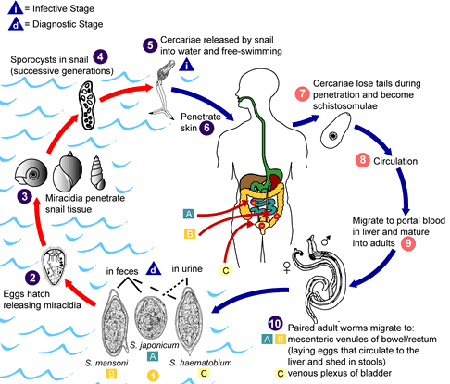
Tapeworms are capable for infecting humans, their lifecycles may look like the following:
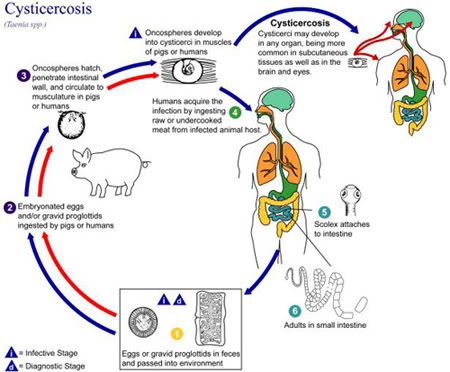
Ascaris is parasitic roundworm that lives in human. Lifecycle of which is shown below:
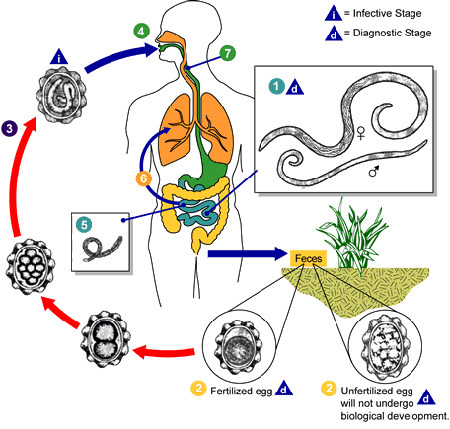
How Unsegmented Worms Fit into the World?
Free-living flatworms always form food chain of bigger animals. Some help aerate the soil with their burrows. However, unsegmented worms are generally known as parasites: hookworms, trichinosis-causing worms, filarial worms, eye worms, etc.
- Hookworms are serious human intestinal parasites that are common in tropical countries. Its eggs hatch outside the body of the host and develop in the soil. If they find an unprotected foot, they use sharp teeth and hooks to burrow into the skin and enter the bloodstream. Then these worms travel through blood to lung and then down the throat to the intestines.
- Trichinosis is a terrible disease caused by the roundworm Trichinella. They cause pain as they burrow into the host’s tissue, where they become inactive. Humans get trichinosis exclusively by eating raw or incompletely cooked pork.
- Filarial worms, which are found primarily in tropical regions in Asia, are threadlike worms that live in blood and lymph vessels of mammals like humans. They are transmitted from one primary host to another through biting insects, especially mosquitoes. Large number of this worm may block the passage of fluids within lymph vessels, causing elephantiasis.
- Eye worms live and burrow through the tissues just below the skin of their host. In their travels, the worms occasionally move across the surface of the eye, hence naming eye worms.
Extension
- Discover magazine published a feature article in its August 2000 issue:
"Every living thing has at least one parasite that lives inside or on it, and many, including humans, have far more. Scientists are only just beginning to discover exactly how powerful these hidden inhabitants can be, but their research is pointing to a remarkable possibility: Parasites may rule the world. The notion that tiny creatures we've largely taken for granted are such a dominant force is immensely disturbing. - Scientists at the University of Utah and in Japan have discovered a gene that ensures the flatworm's brain develops within its head. When the "brains everywhere" gene is silenced, brain material develops throughout the body, including the worm's tail.The human version of the gene probably is not involved in keeping the human brain inside the skull, but likely plays some other role in nervous system development in human embryos, says Alejandro Sánchez Alvarado, a developmental biologist at the University of Utah School of Medicine.
- Stem Cells Research:
Researchers have identified a gene in planaria--freshwater flatworms renowned for their regenerative abilities--that is key for maintenance of their stem cells. Because planarian stem cells share characteristics with those of humans, the work will aid scientists striving to understand how stem cells can be used to completely repair damaged tissues and organs.
Work Cited
“Introduction to the Platyhelminthes”. Introduction to the Platyhelminthes. <http://www.ucmp.berkeley.edu/platyhelminthes/platyhelminthes.html>
“Introduction to the Nematoda.” Introduction to the Nematoda. <http://www.ucmp.berkeley.edu/phyla/ecdysozoa/nematoda.html>
“Introduction to Nematodes.” Introduction to Nematodes. 5 October 2006. <http://plpnemweb.ucdavis.edu/nemaplex/Taxadata/Nemata.htm>
“Phylum Platyhelminthes The Flatworms." Generla Zoology- Phylum Platyhelminthes. 7 September, 1999. <http://www.cbs.umn.edu/class/spring2000/biol/2012/platyhel.htm>
“Phylum Nematoda The Roundworms." Generla Zoology- Phylum Nematoda. 7 September, 1999. <http://www.cbs.umn.edu/class/spring2000/biol/2012/nematoda.htm>
“Gene Prevents 'Brains Everywhere'.” Brains: University of Utah News Release. <http://web.utah.edu/unews/releases/02/oct/brains.html>
“Flatworms at Forefront of Regeneration Research.” National Science Foundation. 7 August 2006. <http://www.nsf.gov/news/news_summ.jsp?cntn_id=107916>
Paperna, I., Tapeworms (Cestoda)." Parasites, infections, and diseases of fishes in Afica. <http://www.fao.org/docrep/008/v9551e/V9551E15.htm#TopOfPage>
Canright, Shelley. “Worms in Space.” NASA-Worms in Space. 4 March, 2006. <http://www.nasa.gov/lb/audience/forstudents/postsecondary/features/F_Worms_in_Space.html>
"Chapters 26-33: Animals and Chapters 47-48: Ecology.” Biology Chapter 26-33. <http://www.villagechristian.org/faculty/kleink/bio-26-33.html>
